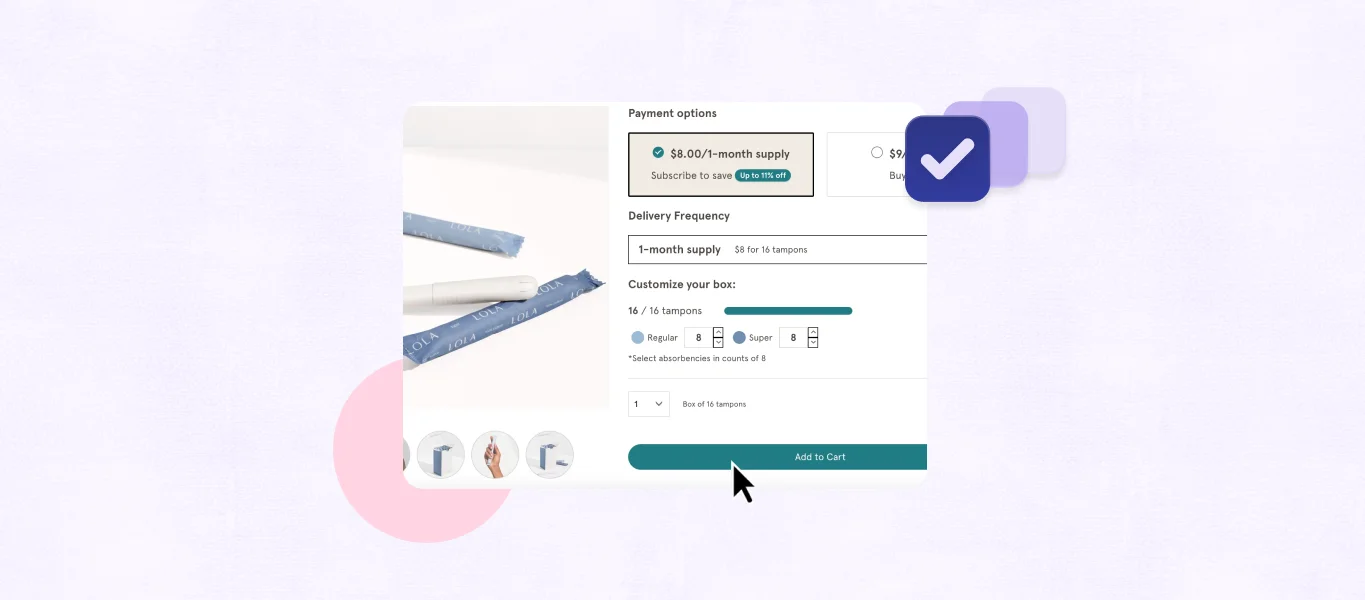Headless commerce is a commerce architecture that allows for the separation of your brand’s front-end and back-end. A headless commerce architecture allows you to have as much flexibility, complexity and agility as your business requires. Contrast to traditional ecommerce platform builds, like Shopify or BigCommerce, headless allows for maximum customization.
Being adaptable and agile in our increasing digital and interconnected ecommerce world allows for exceptional customer experiences and separates you from your competition. Nowadays consumers want to be able to buy products wherever they are. Quite simply, in the age of the attention economy, expecting customers to primarily go on their computer to shop your store is outdated.
It’s imperative for merchants to provide customers with options for their purchase power, such as wearable devices, through smart home speakers, or with a few quick clicks while scrolling social media on their phone. The rate of speed for these new touchpoints for customers to purchase is accelerated and a headless build allows you to capitalize on this opportunity.
Who is best suited for headless commerce?
So is a headless build right for your brand? We talked to Brian Anderson, Founder & CEO of Nacelle, on our Hit Subscribe Podcast about headless builds. Here’s his advice:
(Headless) isn’t for the SMB ecommerce brand that’s getting started. This is for a brand that has a particular pain point, probably associated around latency issues, so page load speed issues, probably associated around dev workflow issues. They’re not necessarily relevant for the SMB that’s getting up and running, probably not needed, and in fact would probably just add confusion to the conversation.
BRIAN ANDERSON, FOUNDER & CEO AT NACELLE
Another consideration for headless commerce and the reality of implementing it for your brand. Do you have the appropriate development teams or dedicated developers to support a headless commerce system? Due to the complexity of headless commerce architecture, having developers on-hand to contribute and maintain a backend system like that is imperative. Luckily, many ecommerce agencies have this built into their DNA, and are able to provide these services to ecommerce brands.
Now let’s understand the differences between headless commerce and traditional commerce. Think of it this way — working within boundaries versus sky’s the limit.
Traditional commerce platforms
Typically, this is where the front-end of your ecommerce platform is tightly coupled to your back-end. In layman’s terms, that means less ability for complex customizations because of the difficulty of navigating those changes in the code.
Traditional commerce platforms offer little room for flexibility as certain sections of the code are either limited, restricted or tangled within the back end system. Often ecommerce platforms, like Shopify, have certain front-end themes or templates with some customization options but don’t allow access to certain options on the back-end. It’s like being able to choose the paint job on your car or the tint of the windows but having no way to change anything under the hood.
Here’s another way to think about it. Imagine your traditional commerce platform as a tall and precariously leaning tower of bricks. To make a certain change you have to find a specific block buried in the middle, take it out, give it a fresh paint job and place it back in precisely where it was.
In this instance you can accomplish that task, but it’s slow and tedious. There’s also certain blocks you simply won’t be able to access because of where they’re situated in the tower. Try and pry one out and the whole tower could come crashing down.
Those blocks in the middle represent editable front-end and back-end code. With traditional commerce platforms, what you see is what you get. Some blocks are off limits, there’s few ways to adjust the tower, and it can be a slow process to do certain tasks. Try and do too much and you’ll be putting too much stress on the tower. If the tower falls or seems unstable while consumers are shopping, they’re unlikely to come back.
But what if you weren’t forced to use a pre-built tower (i.e. traditional commerce platforms)? What if you could continuously build it exactly how you wanted?
The benefits of headless commerce
The buzzword here for headless commerce is “decoupled.” That is to say, your front-end and back-end components aren’t intertwined together. That separation means the sky’s the limit in terms of customization.
Let’s revisit our tower analogy. No longer are you handed a finished tower and are limited by the bricks you can delicately swap out and change with fear of compromising structural integrity. A headless commerce architecture allows you to have full control over how you want your tower to be created from inception.
And our proverbial car? You notice your ride is running too slowly and corners like a cruise ship? You’re the mechanic. You can upgrade the suspension and boost the horsepower without waiting for anyone (i.e. an ecommerce platform) to make changes for you.
On the topic of speed and performance, we know there’s a direct relation to page latency and consumers bouncing off your store. If you were on traditional commerce and noticed your conversion rates were suffering on mobile and chalked it up to page load speed (often resulting in poor customer experiences), there’s little you could do to remedy the situation. But with headless commerce, you’ve got more options.
Using progressive web app (pwa) solutions are one of the many ways to boost speed and user experience using a headless commerce architecture build. The progressive web app optimizes the mobile experience and makes the user feel like they’re using a branded phone app.
Real world example: Imagine your ideal customer scrolling instagram, seeing an ad for your product and with one-click they pull up your store. With the progressive web app, after that initial page load, consumers don’t have to load again in their experience until they get to checkout. The customer can seamlessly navigate your product catalog with no latency issues and make a purchase in mere moments. It’s user experiences like this that increase customer loyalty and keep them coming back.
Without headless and that progressive web app (pwa), your customer is waiting for pages to load every time they click. They’re trying to navigate a user interface that is not optimized to work inside a social media app. This frustrating and often unintuitive customer experience acts as a deterrent and rarely leads to a sale.
Using an omnichannel approach
The term is used to describe the best practice of, “be everywhere your customers are.” The most successful brands are available in all mediums and are omnipresent (therefore omnichannel). The benefits of headless commerce include bolstering your ability to keep your business agile and quickly meet the needs of any new touch-points to reach your customers.
Back to our tower example: Being decoupled allows you to quickly stack a new set of bricks for whatever medium you’re trying to fulfill. Without headless, you’re limited to only what pathways the coupled ecommerce platform allows for.
Freeing yourself with headless allows you to personalize content with headless and an omnichannel experience. You’re faster to market and able to integrate new app integrations to assist your business as they arise, and able to be in front of your customers.
Revisiting our conversation on demystifying headless commerce on our Hit Subscribe podcast with Brian Anderson, he had this to say about the omnichannel experience.
“Your customer wants to interact with your brand in different ways. Maybe it’s Alexa, Google Home, or a mobile app. Maybe it’s an ad they see somewhere. The ability to merge content and commerce in different mediums is really important. But it’s a little hard to do this if you don’t have that separation between the front-end and the back-end because in systems where the front-end and the back-end are coupled together, the back-end assumes that the front-end is a certain medium already. So when you don’t make that assumption and when those two things are separated, it opens up the world for different mediums, like buying with voice.”
BRIAN ANDERSON, FOUNDER & CEO AT NACELLE
A headless commerce system can solve a lot of problems and future proof your business but as indicated, there is upkeep for developers. If you’re curious if a headless subscription build with Recharge would be right for your business please let us know by getting in touch with us here.



